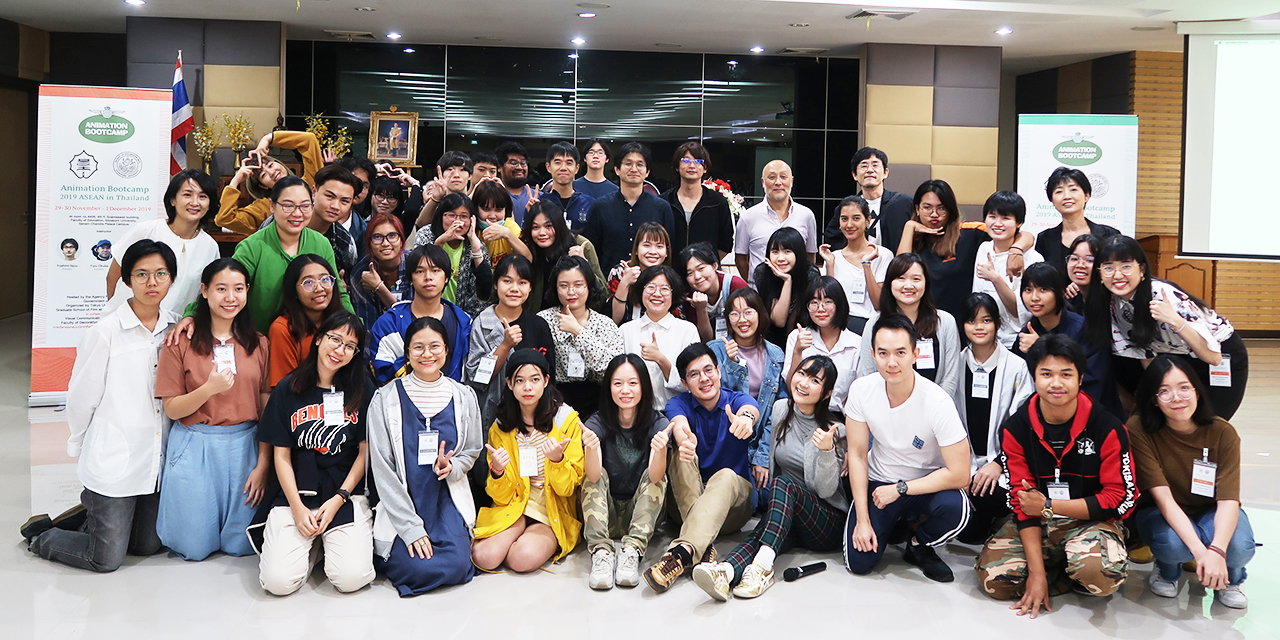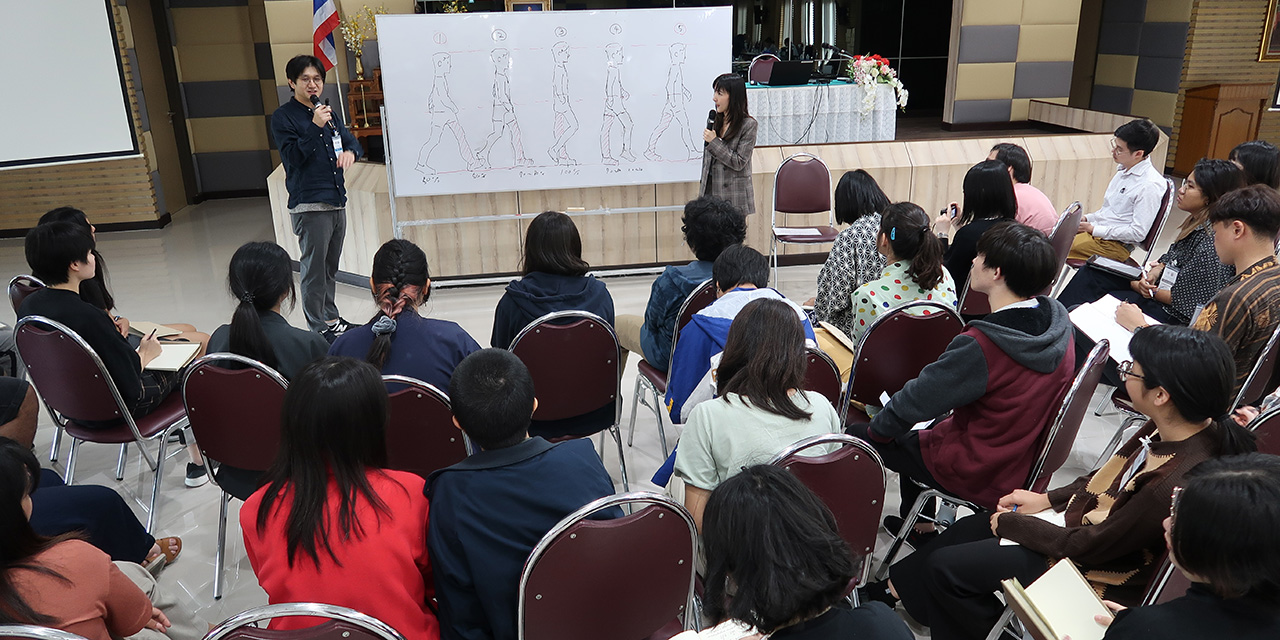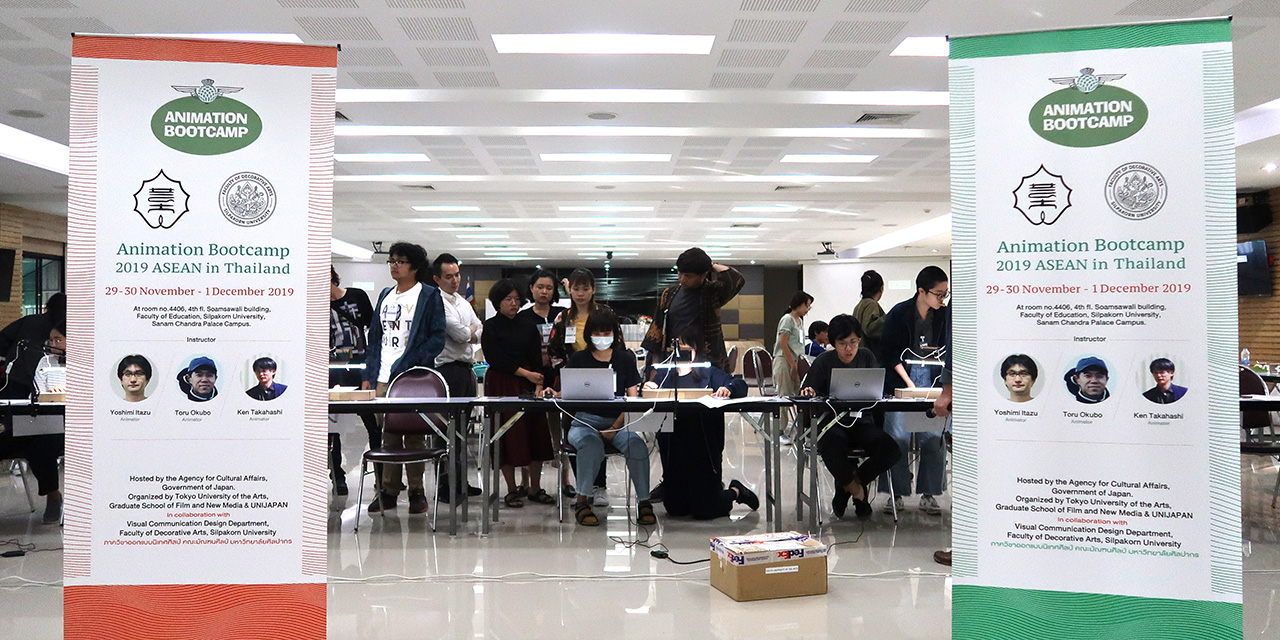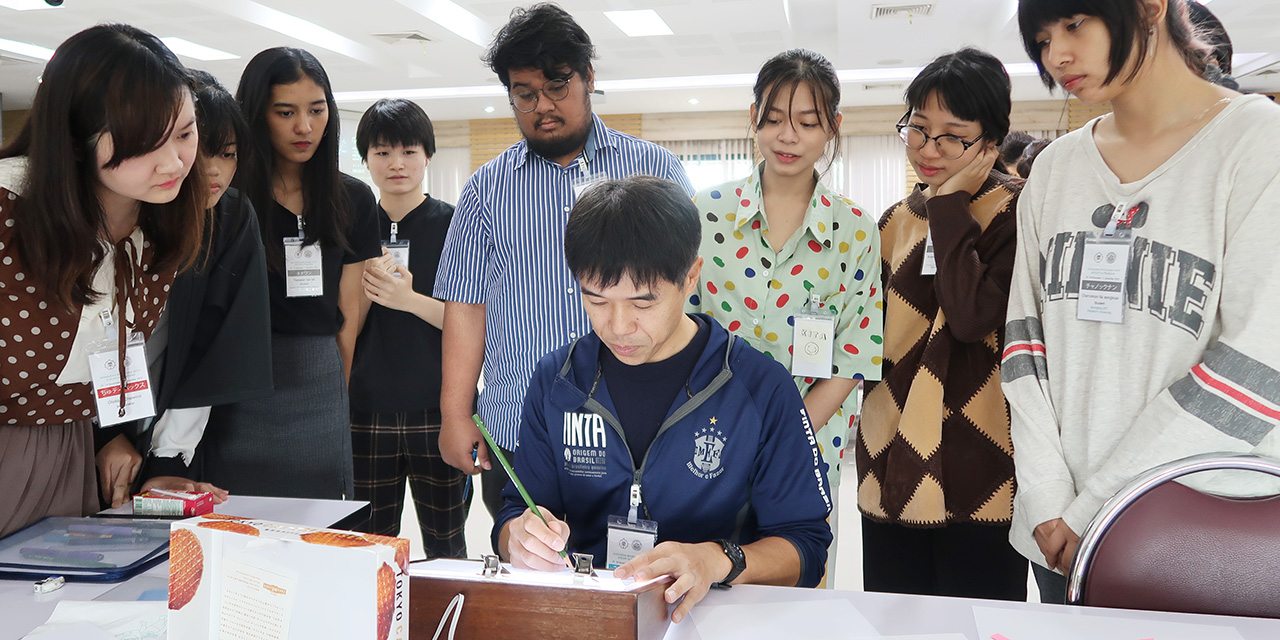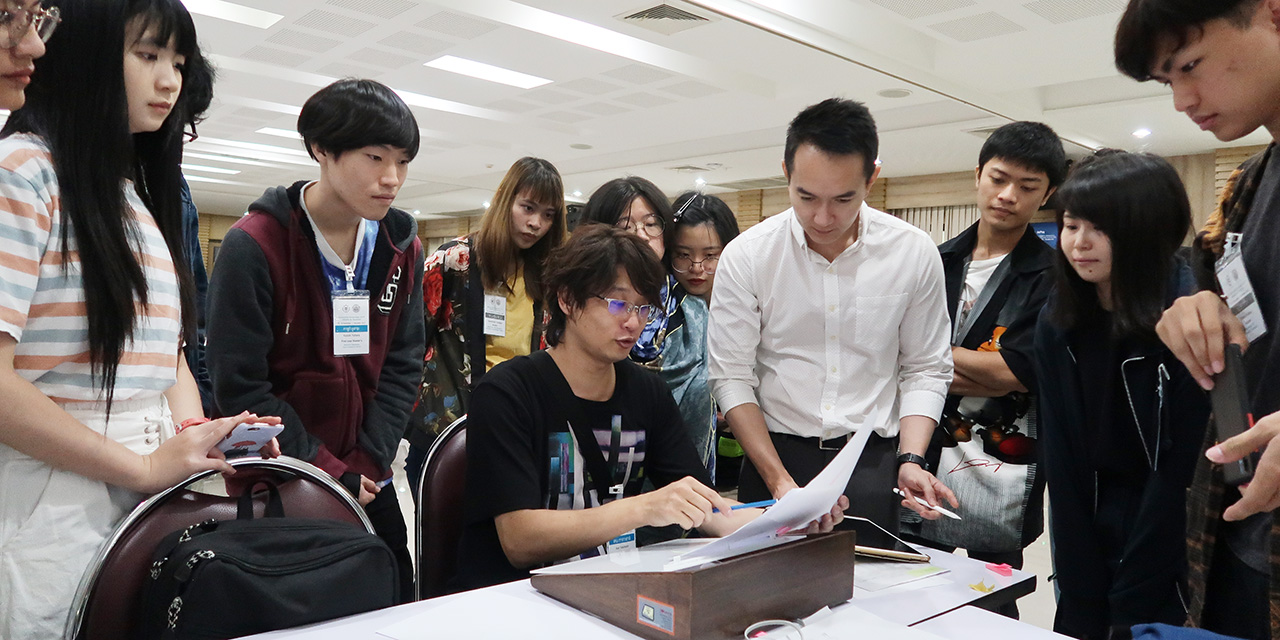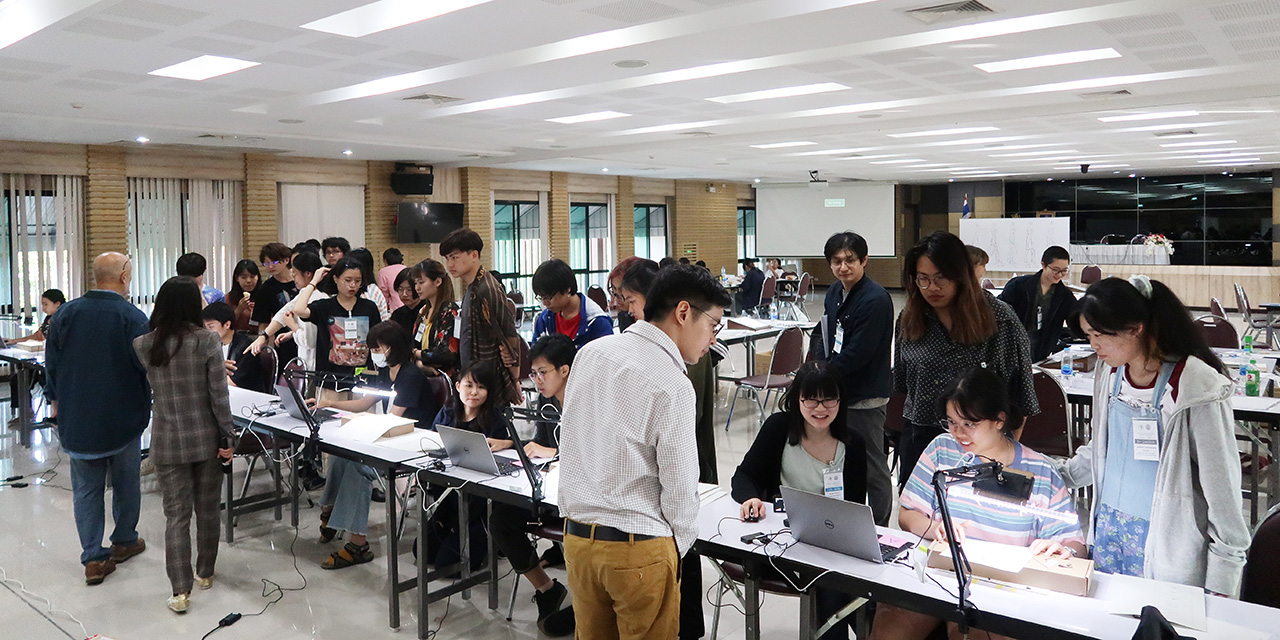Background and Objectives
Thailand is one of the ASEAN countries where Japanese animation is most well-received. Research conducted in 2019 found that Thailand had the 9th highest number of overseas contracts (television, film, videogram, streaming, merchandising, etc.) with Japanese animation companies and surpassed other ASEAN countries (4th in Asia behind China, Korea and Taiwan). Also, looking at their history, Japan and Thailand have had a deep relationship in the animation realm. Kantana Animation Studios of the Kantana Group, which is Thailand’s largest and oldest production studio, started out as a subcontracting company for Japan’s Toei Animation. The younger generation is behind the new wave in animation production seen in the establishment of numerous new animation production studios beyond Kantana. These emerging young creators and students have learned much from overseas animation, and they are particularly influenced by Japanese animation works. However, until now they had few opportunities to receive direct instruction from Japanese animators.
In response to this situation, we started a hands-on workshop in 2015 where we dispatch three prominent professional animators from Japan to teach the basics of animation expression to local young talents in Thailand. The curriculum and teaching methods were based on the Animation Boot Camp workshops, which have been held since fiscal 2012 by the Agency for Culture Affairs as one of their media arts projects.
Animation Boot Camp is an educational program that aims to “train talent who can seek personal growth and development”. It teaches the basics and essentials of animation and emphasizes the importance of “observing” and “feeling” through one’s own body and the pursuit of “expression that communicates to others.” Instructors were comprised of Japan’s top animators who are rarely able to make public appearances, and the workshop allowed students to receive direct guidance from them. By conducting the workshop in Thailand, we aimed to inspire local young talents and give them an in-depth understanding of Japanese animation.
The workshop in Thailand was first held as part of this project in 2015, and the content of the workshop has been acclaimed each year by participating students and faculty at local universities. Furthermore, workshop alumni can now be found working at animation studios in Thailand and contribute to the development of domestic animation production. Also, Tokyo University of the Arts students have participated in the workshop since 2016, and we are seeing interactions among Thai and Japanese youth who have aspirations in the field of animation production.
Team
The Japanese operations were led by co-directors Koji Takeuchi and Taruto Fuyama, with the team that has executed Animation Boot Camp in Japan since 2012 as the core staff, and the instructors were animators with Boot Camp experience in Japan. In addition, smooth operations in Thailand were ensured by having coordination with the university handled by Tokyo University of the Arts, which has deep ties with Thai host institution Silpakorn University, and overall management by UNIJAPAN. Also, the workshop was organized with a robust production team including interpretation handled by the professional translator who has been continually involved in this project since 2016, along with three translators brought on board this year.
| From Japan | |
| Instructors | Yoshimi Itazu [Animator, Director] |
| Toru Okubo [Character Designer, Animation Director/Production I.G, Inc.] | |
| Ken Takahashi [Animator, Action Director, Animation Director] | |
| Directors | Koji Takeuchi [Animation Producer] |
| Taruto Fuyama [Professor, Tokyo University of the Arts] | |
| Project Producer | Mitsuko Okamoto [Professor, Tokyo University of the Arts] |
| Project Manager | Asako Eguchi [Project Assistant Professor, Tokyo University of the Arts] |
| Interpreters | Rinyaphat Phattaratheeda Mukkie, Dhanart Chareonsuk, Pornchai Witayalerdpan, Chutipak Chaiwirot |
| Planning and Administration | Tokyo University of the Arts, Graduate School of Film and New Media |
| General Management | UNIJAPAN |
| Project Chief | Takenari Maeda [UNIJAPAN, Group Manager, International Promotion Group] |
| Project Administrators | Kiyomi Nakazaki [UNIJAPAN, International Promotion Group] |
| Machiko Komatsu [UNIJAPAN, International Promotion Group] | |
The Thai partner for this project is Silpakorn University, a national university that is the country’s leading arts university. Project management was handled by a faculty team with leadership from Chanisa Changadvech of Silpakorn’s Faculty of Decorative Arts, Visual Communication Design Department, and many of the supporting operations staff were students who participated in Boot Camp during past years. For this Boot Camp, there were eight teaching assistants, including university graduates who work at animation studios in Thailand. These Boot Camp alumni return as operations staff each year. This project’s continuity from 2015 has given birth to connections that bridge the years, as Boot Camp alumni share their experience as mentors.
| From Thailand (Silpakorn University) | |
| Local Project Producer | Chanisa Changadvech [Chair of Visual Communication Design Department, Faculty of Decorative Arts] |
| Staff | Kanitta Meechubot [Visual Communication Design Department, Faculty of Decorative Arts] |
| Wannarit Karin [Visual Communication Design Department, Faculty of Decorative Arts] | |
| Thatree Muangkaew [Ceramic Design Department, Faculty of Decorative Arts] | |
| Coordinator | Narumon Rackchean [Officer, Visual Communication Design Department, Faculty of Decorative Arts] |
| Organizing Staff | Supajaree Saengsri [2018 participant] |
| Natthanicha Sara [2018 participant] | |
| Ratchanok Wongsombut [2018 participant] | |
| Theerapatr Prapassorn [2018 participant] | |
| Ploypapat Phusadeekunpaisan [Junior Art Director, Ogilvy/2017-18 staff/2016 participant] | |
| Atikan Intharasukphonv [Concept Artist, Riff Studio/2017-18 staff/2016 participant] | |
| Apinya Losuwannarak [Graphic Designer, Top Gun/2017-18 staff/2016 participant] | |
| Sirikorn Iampattanatham [Concept Artist, Riff Studio/2018 staff/2017 participant] | |
Instructor Profiles
-
Yoshimi Itazu (Animator, Director)
-
Toru Okubo (Character Designer, Animation Director/ Production I.G, Inc.)
-
Ken Takahashi (Animator, Action Director, Animation Director)
Project Overview
《Project Name》
Animation Boot Camp 2019 ASEAN
《Dates》
November 28 (Thur.) to December 1 (Sun.), 2019
《Venue》
Silpakorn University, Sanam Chandra Palace Campus
(located in Nakhon Pathom Province, about 50 kilometers to the west of Bangkok)
《Participants》
31 students
《Students’ University Affiliation》
Silpakorn University
· Visual Communication Design Department, Faculty of Decorative Arts (12 students)
· ICT (Information Communication Technology) (6)
King Mongkut’s University of Technology Thonburi
· Media Arts Department (4)
Kantana Institute
· Animation Department (3)
Tokyo University of the Arts
· Graduate School of Film and New Media, Department of Animation (6)
Detail of the Workshop
《Pre-orientation》
After setting up the workshop venue, we held an orientation session for the Thai-based organizing staff. Almost all of the staff were Boot Camp alumni. Because they were very familiar with the content of Boot Camp, explanations could be kept to the bare minimum.
Then, we moved to the gallery space at Silpakorn University’s Faculty of Decorative Arts and held an introductory workshop and had this year’s participants meet each other. The greeting from professor Chanisa Changadvech of Silpakorn University was followed by a greeting from professor Mitsuko Okamoto of Tokyo University of the Arts, as well as self-introductions from the directors, instructors, staff and Tokyo University of the Arts students.
Furthermore, the Tokyo University of the Arts students made the rounds to each group and did presentations of their own work. The Thai students responded with laughter and lively questions, resulting in a harmonious atmosphere within each group. This “traveling style” for the presentations was a new experiment this year in response to the somewhat formal atmosphere last year, where the works by the Tokyo University of the Arts students were projected on a screen.
After the presentations got the conversation flowing within each group, we did Theater Games as an introduction to Boot Camp. Theater Games are an educational program developed in the world of theater that uses improvised play to deepen understanding of communication, body awareness, and the meaning of self-expression. Amongst the many types of Theater Games, this year we did games in which the participants joined hands and communicated letters with their eyes closed, passed around an air ball, did “air jump rope” using an imaginary rope, and others. There were frequent bursts of laughter and excitement from the participants.
After the participants had loosened up both their bodies and minds through the Theater Games, we did Observations of Walking, which provides a foundation for other Boot Camp assignments. First, all of the participants walked in time to a metronome, helping establish awareness of the “tempo” of basic walking. Next, we had them use their bodies to express a “representative pose for basic walking.” These experiences provide an introduction to help students understand the meaning of “key poses” in animation, as well as facilitate understanding of “walking,” which is a basic movement featured in f the Boot Camp assignments.
The Pre-orientation concluded in good spirits with the participants overcoming their nervousness through the series of activities.
《Day 1》
1) “Key pose assignment”
For this Boot Camp, the participants did three assignments that were structured into stages. It would have been difficult for the students to suddenly tackle the open-ended main assignment, since the participants included students drawing animation for the first time. So, two stages of “standing up from a chair” and “walking” served as basic training to teach them this basic workflow: “Animate after finding the key poses based on observation.” The “standing up from a chair ” assignment came first.
Last year, “jumping” was the first assignment, but this time we had the participants draw the action of “standing up from a chair” to help them more clearly understand the importance of the “center of gravity.” The assignment is at a more basic level than “jumping,” but in terms of the educational content it encompasses the objective of having the participants understand the “breakdown” between two key poses and in that sense is more advanced than last year. This Boot Camp builds upon last year’s introduction of the “thumbnails” instructional method, in which participants search for key poses through small rough sketches called “thumbnails.”
After about an hour of work, they pasted the completed thumbnail drawings on the wall and attached sticky notes to the poses that they thought were suitable. After they all examined the poses tagged with sticky notes, director Takeuchi reviewed their work and gave a lecture. In the lecture, he explained the importance of “center of gravity” as well as the meanings of “key pose” and “breakdown.”
Next, the participants divided into groups and each instructor reviewed the poses drawn by the students and gave commentary regarding suitable poses. This time a Japanese-Thai interpreter was assigned to each instructor, thereby ensuring that the group-based instruction went smoothly.
2) “Walking” assignment
After the “standing up” assignment, the participants next did the “walking” assignment. The basic workflow was the same as the “standing up” assignment. Participants first moved their bodies and did observations of walking, and then they drew thumbnails and found key poses.
First, each group decided what kind of walking they were going to depict, and they drew two key poses. Next, each person drew the poses in between the two key poses (“breakdown”). The poses that they drew were photographed and checked using the KOMA KOMA for iPad stop-motion photography software developed by director Fuyama. As the conclusion of the “walking” assignment, each group did a demonstration of the walk that they depicted in the assignment, and then the photographed animations were screened. After that, instructor Itazu gave a lecture on the main points for animation as a summary for the “walking” assignment.
3) “The Box” Assignment
The main assignment was “The Box. Each group thought up a story based on the following premise: “The protagonist is moving a box with something like a watermelon inside, walks away with but the contents spill out when he or she falls. The contents are unexpected so he or she returns it to the box and walks off.” Then, each group expressed the story in five scenes, with each person in charge of one scene.
First, we had each group discuss and decide the story. Actual boxes and watermelons were placed in the venue since the participants were encouraged to use their bodies when thinking about their story. After deciding their story, we had them draw it out as a storyboard. Their goal for the day was to complete a storyboard movie showing the overall story through photographing the storyboard drawings with the KOMA CHECKER software developed by director Fuyama. The activity progressed smoothly for the most part, and by the end of Day 1 almost all of the groups had finished photographing their storyboards.
《Day 2》
From Day 2 onwards the students did real animation. Based on the storyboard movies produced on Day 1, the student in charge of each cut did the animation. We had them use the method of drawing from “key poses” that they learned through the two assignments on Day 1, rather than the method of drawing in sequence from the beginning (“straight ahead” animation). When explaining this method, director Takeuchi conveyed to the students that he wanted them to understand “key poses” as “attitude.” On Day 1 the key pose was explained as “the picture showing the moment when the center of gravity changes and the moment after;” however, for Day 2 onwards we wanted the students to consider performance, including even internal states such as the character’s intentions and emotions.
Under the guidance of the three instructors, the students first searched for key poses using rough drawings to generally grasp the performance. They picked them up over and over to use their own bodies to figure out the body movements as they drew. The three instructors responded to questions from the students with actual drawings and gave advice on test footage photographed with the KOMA CHECKER software.
At the end of the morning session, their work-in-progress animations were screened and everyone checked their progress. The people who had basically completed the overall performance through the key poses then added the breakdown drawings in between the key poses and gradually created smooth movements. The students each worked at different paces, so we had them write their immediate workflow goal on the whiteboard so that they could do their work while checking their remaining goals. The students progressed with their animation work in silence, all the while seeing for themselves that the quality of the movement improved as the quantity of drawings increased. The students persevered to the end and concluded Day Two an hour beyond the planned end time.
《Day 3》
For the final day, participants used the morning to do the final work on the animation and finished their pieces. Like Day Two, each student wrote his or her goals on the whiteboard and progressed while checking off remaining tasks. All of the groups completed their animations before lunch.
After lunch, director Takeuchi screened “Wings of Death: Albatross” from the “Lupin the Third” TV animation series, which Miyazaki Hayao was involved with as a director and Takeuchi handled the series production management. The work is close to 40 years old, but the Thai students enjoyed it as a work that still feels fresh.
After the “Lupin the Third” screening, the finished assignments were screened and reviewed. Director Takeuchi asked each participant to vocalize real-time sound effects when his or her section was screened. The students overcame their embarrassment and each person performed sound effects for the part that he or she animated, and the screening concluded with enthusiastic applause. It seemed clear that each and every student was able to genuinely experience the joy of seeing his or her ideas get across to the audience. After the screening, the instructors critiqued each team’s work and summarized the strengths and aspects that still needed work.
There was a question and answer session after the review. The students had many questions focusing on techniques and the anime production, including “What happens during pre-production?” “What is the production process for 2D animation?” “How do TV anime series stay on schedule?” “What software is used?” “How much time is needed to produce a single episode of an anime series?” and “What parts of animation are outsourced to overseas companies?” In addition, there were high-caliber questions such as “Will 2D animation survive into the future given that 3DCG is becoming mainstream around the world?” and questions specific to creators, such as “How do you deal with your work when you’re not in the mood?” as well as questions oriented toward the future, such as “I want to work at a Japanese studio, but is there the possibility of doing such work in Thailand a Thai citizen getting hired?”
After the Q&A session, each student received a Certificate of Completion and the entire program came to an end. The atmosphere of camaraderie continued even after the closing ceremony, with Japanese students and Thai students exchanging contact information and some students asking the instructors for autographs.
Questionnaire Responses from Workshop Participants
- Was this workshop interesting?
-
It was very interesting. 14
It was interesting to a certain degree. 4
Not sure 1
- Were you able to understand the content of this workshop well?
-
I was able to understand fully. 11
I was able to understand to a certain degree. 8
- Was the curriculum appropriate?
-
It was very appropriate. 12
It was appropriate to a certain degree. 7
- Were the instructions given in the workshop appropriate?
-
It was very appropriate. 14
It was appropriate to a certain degree. 5
- Do you think that what you learned in this workshop will be useful in your future projects?
-
It will be useful. 15
It will be useful to a certain degree. 4
- Given the opportunity, would you like to work in the Japanese animation industry in the future?
-
I would like to very much. 8
I would like to somewhat. 8
Not sure. 3
- Please list some of the things you have learned in this workshop.
-
-How to create natural movements.
-How animators collaborate with one other.
-English and a little bit of Japanese. The importance of structure in creating the mood of a work. Clarifying the work to be handled by team members, since the things each person can do within a small amount of time is limited.
-For 2D animation smooth movement is important.
-Resilience and exercising a sense of responsibility.
-I gained knowledge about animation techniques.
-How to make animation. How to collaborate with people I just met.
-Very useful information. Knowledge on how to improve.
-Key poses, breakdowns, in betweens.
-Procedures for work.
-How to work within a team. How to move forward with work that has a schedule. That way, everything becomes easier and you can finish on time.
-I gained knowledge about the process of animation production. I also learned about coordination.
-Group work, movement. About the emotions expressed through what I draw.
-About Japanese animation production. About how hard it is.
-The workstyle of Japanese animation. Poses to draw for the walking and running key frames. Express inspiration through the in-between drawings.
-Now I pay more attention to the scale (ratio) of real objects when creating drawings and animation.
-Movement. How to naturally draw walking, running, and carrying things.
-How to finish within the schedule and cooperate with other people.
- Comments and responses to the workshop
-
-Thank you. It was a wonderful workshop. Please definitely hold it again.
-I’m glad I could make animation in a group because that is how animation is made in actual companies.
-This workshop was the best. Everything about Japan is very good. I learned a lot. I am grateful. P.S. I am a fan of Mr. Itazu!
-The instructors looked after us well and were very kind and thorough in checking our work.
-My world expanded a lot.
-I think more time should be taken for this workshop.
-I was a little bored because it was content I learned before. But, I think it was a wonderful workshop for people who haven’t studied 2D animation before.
-I wanted a lot more time for Q&A. It was very useful and also interesting to listen to people who have so much experience actually working.
-I want to go to Japan and work in animation.
